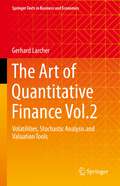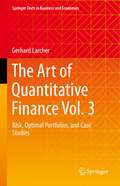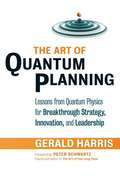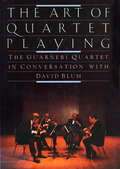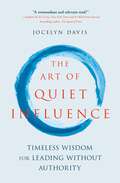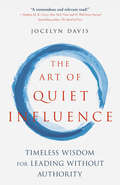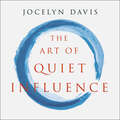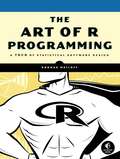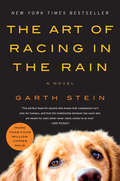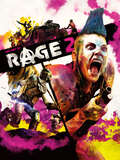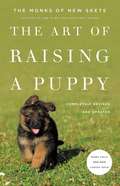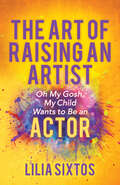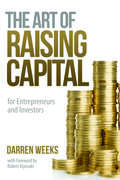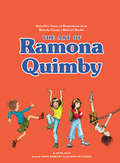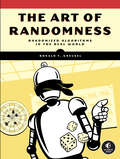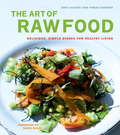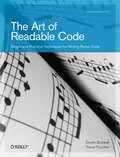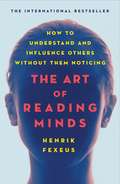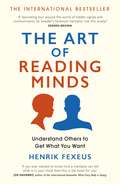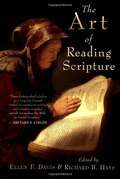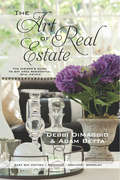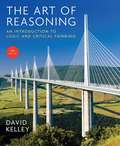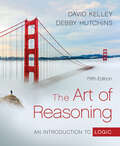- Table View
- List View
The Art of Quantitative Finance Vol.2: Volatilities, Stochastic Analysis and Valuation Tools (Springer Texts in Business and Economics)
by Gerhard LarcherThis textbook provides the necessary techniques from financial mathematics and stochastic analysis for the valuation of more complex financial products and strategies. The author discusses how to make use of mathematical methods to analyse volatilities in capital markets. Furthermore, he illustrates how to apply and extend the Black-Scholes theory to several fields in finance. In the final section of the book, the author introduces the readers to the fundamentals of stochastic analysis and presents examples of applications. This book builds on the previous volume of the author’s trilogy on quantitative finance. The aim of the second volume is to present and discuss more complex and advanced techniques of modern financial mathematics in a way that is intuitive and easy to follow. As in the previous volume, the author provides financial mathematicians with insights into practical requirements when applying financial mathematical techniques in the real world.
The Art of Quantitative Finance Vol. 3: Risk, Optimal Portfolios, and Case Studies (Springer Texts in Business and Economics)
by Gerhard LarcherThe textbook discusses risk management in capital markets and presents various techniques of portfolio optimization. Special attention is given to risk measurement and credit risk management. Furthermore, the author discusses optimal investment problems and presents various examples. In the last section, the book includes numerous case studies based on the author’s own work as a fund manager, court-appointed expert and consultant in the field of quantitative finance. This book is the third volume of the quantitative finance trilogy by the author and builds on the theoretical groundwork introduced in the previous books. The volume presents real-life examples of the successful application of the introduced techniques and methods in financial services and capital markets.
The Art of Quantum Planning
by Gerald HarrisPlanning today is plagued by a lack of imagination. It's often difficult, when working with a business, organization, or any group of people, to upend traditional thinking and unlock new ideas and new possibilities. If you are a strategic planner, or anyone charged with managing growth or facilitating change, it is important to add to your arsenal tools that will allow you to break unhealthy groupthink, avoid old patterns, and escape narrow safe zones. In The Art of Quantum Planning Gerald Harris takes seven concepts from the scientific study of tiny particles and applies them in the larger world, showing how they can pry open minds, spur creativity, and make the planning process far more innovative and effective. The dual nature of light--it can be both a wave and a particle--serves as a jumping-off point for a discussion of how either-or thinking can limit our sense of what options are open to us. Heisenberg's Uncertainty Principle, which says we cannot know both the position and the speed of an electron, reminds us that it is impossible to be aware of every variable, and so planning must be a learning process that continually incorporates new information and makes adjustments. Harris explains quantum concepts in layman's language and, using real-world examples, gives practical advice on applying the ideas in actual planning situations--including improving techniques for scenario analyses that help managers function in an uncertain business environment. This approach demands an open mind and a willingness to venture into unexplored territory--also keys for effective leadership. Using the lessons provided as triggers for thinking The Art of Quantum Planning will help readers to a more profound understanding of how to create successful strategies.
The Art of Quartet Playing: The Guarneri Quartet in Conversation with David Blum
by David BlumHow do four instrumentalists with strong individual tastes and temperaments manage to forge a distinctive approach to the music they play? This extraordinary book ushers readers into the workshop of one of the world's most accomplished string quartets. In rich and probing conversations with their longtime friend and musicologist and conductor David Blum, the members of the Guarneri String Quartet, both individually as a group, tell what it is like to play together.
The Art of Quiet Influence: Timeless Wisdom for Leading Without Authority
by Jocelyn DavisInfluence is getting things done without coercion. It's strength without force-mindfulness in action. Master influencers walk lightly, talk softly and have no need of a big stick, yet collective success hinges on their words and deeds.Anyone can be a quiet influencer. Featuring twelve specific practices, twelve typical pitfalls and dozens of powerful stories and examples, The Art of Quiet Influence is a roadmap for the journey. Author Jocelyn Davis weaves together the timeless wisdom of Eastern thinkers-from Confucius to the Buddha, from Rumi to Gandhi-with research and insights from modern-day experts, revealing what's wrong with the Western view of influence as short-term persuasion and showing instead how to create trust-based collaborations with lasting impact.
The Art of Quiet Influence: Timeless Wisdom for Leading without Authority
by Jocelyn DavisAnyone can be a quiet influencer. But not everyone knows how."A tremendous and relevant read!" -Stephen M. R. Covey, New York Times and #1 Wall Street Journal bestselling author of The Speed of TrustDrawing on the enduring wisdom of the Buddha, Confucius, Rumi, Gandhi and others, The Art of Quiet Influence shows anyone, not just bosses, how to use influence without authority, a key mindfulness principle, to get things done at work and in life. Through the classic wisdom of 12 Eastern sages, relevant insights from influence research, and anecdotes and advice from 25 contemporary experts, Davis lays out a path for becoming a "mainspring," the unobtrusive yet powerful influencer first introduced in her book The Greats on Leadership. Organized around three core influence practices - Invite Participation, Share Power, and Aid Progress - readers will learn how to take mindfulness practice "out of the gym and onto the field," while gaining the confidence and practical know-how to be influential in whatever role they occupy.
The Art of Quiet Influence: Timeless Wisdom for Leading Without Authority
by Jocelyn DavisMindfulness meets execution . . . at work. The wisdom of 13 Eastern sages, augmented by modern research on workplace influence, is the basis for profound yet practical advice on getting things done without force.The Art of Quiet Influence shows anyone how to use influence, a key mindfulness principle, to get things done at work. Through the classic wisdom of 13 Eastern sages (especially the Buddha), relevant insights from influence research, and anecdotes and advice from 25 contemporary experts, Davis lays out a path for becoming a 'mainspring,' an unobtrusive yet powerful influencer.Organised around three core influence practices: Invite Participation, Share Power, and Aid Progress, readers will learn how to take mindfulness practice 'out of the gym and onto the field,' while gaining the confidence and practical know-how to be influential in whatever role they occupy.(P)2019 Hodder & Stoughton Limited
The Art of R Programming: A Tour of Statistical Software Design
by Norman MatloffR is the world's most popular language for developing statistical software: Archaeologists use it to track the spread of ancient civilizations, drug companies use it to discover which medications are safe and effective, and actuaries use it to assess financial risks and keep economies running smoothly.The Art of R Programming takes you on a guided tour of software development with R, from basic types and data structures to advanced topics like closures, recursion, and anonymous functions. No statistical knowledge is required, and your programming skills can range from hobbyist to pro.Along the way, you'll learn about functional and object-oriented programming, running mathematical simulations, and rearranging complex data into simpler, more useful formats. You'll also learn to:–Create artful graphs to visualize complex data sets and functions–Write more efficient code using parallel R and vectorization–Interface R with C/C++ and Python for increased speed or functionality–Find new R packages for text analysis, image manipulation, and more–Squash annoying bugs with advanced debugging techniquesWhether you're designing aircraft, forecasting the weather, or you just need to tame your data, The Art of R Programming is your guide to harnessing the power of statistical computing.
The Art of Racing in the Rain: A Novel
by Garth SteinEnzo knows he is different from other dogs: a philosopher with a nearly human soul (and an obsession with opposable thumbs), he has educated himself by watching television extensively, and by listening very closely to the words of his master, Denny Swift, an up-and-coming race car driver. <p><p> Through Denny, Enzo has gained tremendous insight into the human condition, and he sees that life, like racing, isn't simply about going fast. Using the techniques needed on the race track, one can successfully navigate all of life's ordeals. <p><p> On the eve of his death, Enzo takes stock of his life, recalling all that he and his family have been through: the sacrifices Denny has made to succeed professionally; the unexpected loss of Eve, Denny's wife; the three-year battle over their daughter, ZoË, whose maternal grandparents pulled every string to gain custody. In the end, despite what he sees as his own limitations, Enzo comes through heroically to preserve the Swift family, holding in his heart the dream that Denny will become a racing champion with ZoË at his side. Having learned what it takes to be a compassionate and successful person, the wise canine can barely wait until his next lifetime, when he is sure he will return as a man. <p><p> A heart-wrenching but deeply funny and ultimately uplifting story of family, love, loyalty, and hope, The Art of Racing in the Rain is a beautifully crafted and captivating look at the wonders and absurdities of human life . . . as only a dog could tell it.
The Art of RAGE 2
by Avalanche StudiosAn outrageous collection of art and commentary from the development of id Software and Avalanche Studios' dystopian first-person-shooter, RAGE 2!Delving into the rebellious world of the Wasteland, this volume examines the most intense moments of RAGE 2 in an extensive fusion of art and commentary! Explore the split scenery of lush overgrowth and desolate deserts in concepts and renders from across the incredible setting. This wicked collection details the game's wide-open world, insane characters, and big f%$@ing guns--all with exclusive commentary from the game's developers.Dark Horse Books joins with Bethesda Softworks and id Software, the creators of the first-person shooter genre, to present The Art of RAGE 2. Don't miss out on this vital addition to any wild wastelander's collection.
The Art of Raising a Puppy (Revised Edition)
by Monks of New SketeFor more than thirty years the Monks of New Skete have been among America's most trusted authorities on dog training, canine behavior, and the animal/human bond.In their two now-classic bestsellers, How to be Your Dog's Best Friend and The Art of Raising a Puppy, the Monks draw on their experience as long-time breeders of German shepherds and as trainers of dogs of all breeds to provide--brilliantly distilled--the indispensable information and advice that every dog owner needs.This new edition of The Art of Raising a Puppy features new photographs throughout, along with updated chapters on play, crating, adopting dogs from shelters and rescue organizations, raising dogs in an urban environment, and the latest developments in canine health and canine behavioral theory.
The Art of Raising an Artist: Oh My Gosh, My Child Wants to Be an Actor
by Lilia SixtosThe Art of Raising an Artist guides parents in helping their children explore the world of acting and ultimately invest in their child’s future.Actor and director, Lilia Sixtos has seen thousands of auditions and taught hundreds of artists. By raising her two creative children, she has learned every possible way a creative person’s journey can be helped or hindered by their parents. In The Art of Raising an Artist, she shows parents how to:Identify the best training they can provide for their child within their meansDevelop a safe and loving space for the challenges of their child’s journeyCreate the support team their child needsFind their child’s nicheFit the needs of their child’s career with the needs of the whole family
The Art of Raising Capital: for Entrepreneurs and Investors
by Darren Weeks Foreword by Robert KiyosakiDarren Weeks is Canada’s most prominent financial educator. He is the Founder of the Fast Track Group of Companies, an acclaimed solutions-based financial literacy firm and one of the nation’s fastest-growing companies. For nearly a decade and a half, Darren has spoken to hundreds of thousands of people across North America, Europe and Latin America about how to become financially independent. He is an advocate of learning how to create wealth through business and investment, and believes that this vital knowledge is lacking from traditional education. In fact, in every country that he has spoken Darren has seen that schools do not teach their students to manage money. Darren has made it his mission to fill that void by providing financial education to people across the world. He went from an average middle-class upbringing to raising hundreds of millions of dollars in investor capital, owning nearly 5,000 real estate properties, millions of dollars in energy assets and acquiring two cruise ship terminals in the Caribbean. All of this was accomplished by educating himself on how to do it and then taking action. There is no greater expert on the art of raising capital from investors and no person more committed to sharing this information than Darren Weeks.
The Art of Ramona Quimby: Sixty-Five Years of Illustrations from Beverly Cleary’s Beloved Books
by Anna KatzThe Art of Ramona Quimby celebrates the artists behind Beverly Cleary's inimitable Ramona Quimby series.The adventures of her iconic heroine have been brought to life by five different artists: Louis Darling, Alan Tiegreen, Joanne Scribner, Tracy Dockray, and Jacqueline Rogers.Readers can compare multiple interpretations of iconic scenes (remember the infamous egg-cracking incident?), read letters exchanged between Cleary and the first illustrator, and learn the stories behind the illustrations.• Celebrates the timeless work by these five artists since Beverly Cleary published the first Ramona Quimby book in 1955• Includes excerpts from the books• Two essays illuminate the series's narrative and artistic impactThe Art of Ramona Quimby explores the evolution of an iconic character, and how each artist has ultimately made her timeless.For fans of illustration and design, and for those who grew up alongside Ramona, this richly nostalgic volume reminds us why we fell in love with these books.• Beverly Cleary's bestselling children's series has sold over 50 million copies.• Great for readers who grew up with Ramona and Beezus, as well as parents, grandparents, and anyone who remembers reading these books when they were young• A must-have for fans of Beverly Cleary and the Ramona series, as well as anyone interested in illustrated character art and development over time• Perfect for those who loved The Secret Art of Dr. Seuss by Theodor Geisel, The Art of Eric Carle by Eric Carle, and Literary Wonderlands: A Journey Through the Greatest Fictional Worlds Ever Created by Laura Miller
The Art of Randomness: Randomized Algorithms in the Real World
by Ronald T. KneuselHarness the power of randomness (and Python code) to solve real-world problems in fun, hands-on experiments—from simulating evolution to encrypting messages to making machine-learning algorithms!The Art of Randomness is a hands-on guide to mastering the many ways you can use randomized algorithms to solve real programming and scientific problems. You&’ll learn how to use randomness to run simulations, hide information, design experiments, and even create art and music. All you need is some Python, basic high school math, and a roll of the dice.Author Ronald T. Kneusel focuses on helping you build your intuition so that you&’ll know when and how to use random processes to get things done. You&’ll develop a randomness engine (a Python class that supplies random values from your chosen source), then explore how to leverage randomness to:Simulate Darwinian evolution and optimize with swarm-based search algorithmsDesign scientific experiments to produce more meaningful results by making them truly randomImplement machine learning algorithms like neural networks and random forestsUse Markov Chain Monte Carlo methods to sample from complex distributionsHide information in audio files and images, generate art, and create musicReconstruct original signals and images from only randomly sampled dataScientific anecdotes and code examples throughout illustrate how randomness plays into areas like optimization, machine learning, and audio signals. End-of-chapter exercises encourage further exploration.Whether you&’re a programmer, scientist, engineer, mathematician, or artist, you&’ll find The Art of Randomness to be your ticket to discovering the hidden power of applied randomness and the ways it can transform your approach to solving problems, from the technical to the artistic.
The Art of Ratchet & Clank
by Sony Computer EntertainmentA retrospective exploration of the galaxy's most lovable video game heroes--Ratchet and Clank!For fifteen years the most unlikely heroes in the cosmos have been adventuring across the stars, kicking butt and taking names. Ratchet and Clank have rescued innocent civilizations, taken down evil corporations, defeated robot armies, incited space prison breakouts, and even colluded with interstellar pirates! Now, Dark Horse Books and Insomniac Games proudly offer a look back at the history of the iconic series in a Qwark-tastic collection of never-before-seen concept art and behind-the-scenes commentary chronicling eleven amazing games and the brilliant studio that created them!
The Art of Raw Food
by Vibeke Kaupert David Wolfe Jens CasupeiRaw food is for everyone, say the authors of one of Denmark's best-selling cookbooks, and they make a compelling case for that claim. Equally at home on the coffee table or in the kitchen, The Art of Raw Food features gorgeous four-color photography and delicious yet simple raw food recipes as well as a background on the benefits of a raw food diet. Jens Casupei and Vibeke Kaupert, raw food enthusiasts with a flair for style as well as a passion for healthy living, introduce readers to the good (raw food), the bad (processed food), and the ugly (how processed food can make you feel). Sixty pages of information on health and diet are followed by 260 pages of mouth-watering recipes. In 140 recipes, the authors cover breakfast (Delicious Buckwheat Porridge); shakes and smoothies (Orange and Blackcurrant Shake); soups (Light and Fluffy Pepper Bisque); main dishes (Chili Sin Carne); soups, dips, and patés (Olive Tapenade); desserts (Pineapple Carpaccio with Berry Coulis); snacks (Quetzalcoatl Chocolate); and sauces and dressings (Sunflower and Beetroot Sauce). A terrific introduction to the world of raw foods for any newcomer, Raw Food offers plenty of diverse and unique recipes for every occasion. The Art of Raw Food official website: http://theartofrawfood.com/
The Art of Readable Code: Simple and Practical Techniques for Writing Better Code (O'reilly Ser.)
by Dustin Boswell Trevor FoucherAs programmers, we’ve all seen source code that’s so ugly and buggy it makes our brain ache. Over the past five years, authors Dustin Boswell and Trevor Foucher have analyzed hundreds of examples of "bad code" (much of it their own) to determine why they’re bad and how they could be improved. Their conclusion? You need to write code that minimizes the time it would take someone else to understand it—even if that someone else is you.This book focuses on basic principles and practical techniques you can apply every time you write code. Using easy-to-digest code examples from different languages, each chapter dives into a different aspect of coding, and demonstrates how you can make your code easy to understand.Simplify naming, commenting, and formatting with tips that apply to every line of codeRefine your program’s loops, logic, and variables to reduce complexity and confusionAttack problems at the function level, such as reorganizing blocks of code to do one task at a timeWrite effective test code that is thorough and concise—as well as readable"Being aware of how the code you create affects those who look at it later is an important part of developing software. The authors did a great job in taking you through the different aspects of this challenge, explaining the details with instructive examples."—Michael Hunger, passionate Software Developer
The Art of Reading Minds: How to Understand and Influence Others Without Them Noticing
by Henrik FexeusThe internationally bestselling guide to "mind-reading" by influencing those around you via non-verbal communication, from human psychology expert Henrik Fexeus. How would you like to know what the people around you are thinking? Do you want to network like a pro, persuade your boss to give you that promotion, and finally become the life of every party? Now, with Henrik Fexeus's expertise, you can. The Art of Reading Minds teaches you everything you need to know in order to become an expert at mind-reading. Using psychology-based skills such as non-verbal communication, reading body language, and using psychological influence, Fexeus explains how readers can find out what another person thinks and feels– and consequently control that person’s thoughts and beliefs. Short, snappy chapters cover subjects such as contradictory signs and what they mean, how people flirt without even knowing it, benevolent methods of suggestion and undetectable influence, how to plant and trigger emotional states, and how to perform impressive mind-reading party tricks. Fexeus gives readers practical (and often fun) examples of how to effectively mind-read others and use this information, benevolently, both in personal and professional settings.
The Art of Reading Minds: Understand Others to Get What You Want
by Henrik Fexeus'A fascinating tour around the world of hidden signals and communication by Sweden's foremost mentalist. Use this wisely!' - Derren BrownLearning to mind read isn't as out there as it may sound. In every interaction we have, we give away a range of non-verbal signals, often more powerful than the words we say.The Art of Reading Minds teaches you how to influence others, bringing them round to your way of thinking. Rooted in cognitive psychology, Henrik Fexeus explains how readers can find out what another person feels - and consequently control that individual's thoughts and beliefs.Short, snappy chapters cover subjects like:Contradictory signs and what they meanHow you flirt with people without even knowing it Methods of suggestion and undetectable influenceHow to plant and trigger emotional states Fexeus offers practical tips to master the art of persuasion, which will boost your confidence both in personal and professional settings. Simple exercises throughout the book will heighten your self-awareness, revealing how you are perceived by others. Whether you want to get a promotion, negotiate a pay rise, network like a pro, find romance or spot when someone is lying, The Art of Reading Minds shows you how to uncover what people are really saying.'If you ever wanted to know how a mentalist can tell what is in your mind, then this is the book for you.' - Joe Navarro, author of the international bestseller What Every Body is Saying
Art of Reading Scripture
by Ellen F. Davis Richard B. HaysThe difficulty of interpreting the Bible is felt all over today. Is the Bible still authoritative for the faith and practice of the church? If so, in what way? What practices of reading offer the most appropriate approach to understanding Scripture? The church's lack of clarity about these issues has hindered its witness and mission, causing it to speak with an uncertain voice to the challenges of our time. <p><p> This important book is for a twenty-first-century church that seems to have lost the art of reading the Bible attentively and imaginatively. The Art of Reading Scripture is written by a group of eminent scholars and teachers seeking to recover the church's rich heritage of biblical interpretation in a dramatically changed cultural environment. Asking how best to read the Bible in a postmodern context, the contributors together affirm up front "Nine Theses" that provide substantial guidance for the church. The essays and sermons that follow both amplify and model the approach to Scripture outlined in the Nine Theses. <p><p> Lucidly conceived, carefully written, and shimmering with fresh insights, The Art of Reading Scripture proposes a far-reaching revolution in how the Bible is taught in theological seminaries and calls pastors and teachers in the church to rethink their practices of using the Bible.
The Art of Real Estate: The Insider's Guide to Bay Area Residential Real Estate
by Debbi Dimaggio Adam BettaDebbi DiMaggio's newest book is the first in The Art of Real Estate series, an upcoming sequence of convenient and practical guides to specific real estate markets across the United States. In this East Bay edition, interested local buyers and sellers find area-specific advice on navigating local market trends, choosing the ideal real estate agent, successfully marketing a home for sale, and managing financial concerns, among many other topics. The book also contains a myth-busting chapter that addresses common industry misconceptions from a real estate agent's insider point of view and copies of essential real estate documents and forms. This extremely localized guide, focusing on Debbi's major real estate markets in Piedmont, Oakland, Berkeley, and Montclair, is a must-have for any savvy buyer or seller looking to do business in the area.
The Art of Reasoning: An Introduction to Logic and Critical Thinking (Fourth Edition)
by David KelleyDesigned for courses in introductory logic or critical thinking. In addition to the elements of formal deductive logic, it includes classification and definition, basic argument analysis, fallacies, and inductive reasoning.
The Art of Reasoning (Fifth Edition): An Introduction To Logic
by David Kelley Debby HutchinsHow students learn logic best Informed by co-author Debby Hutchins’ extensive teaching experience and research on logic education, The Art of Reasoning is the most effective text for teaching logic today. The Fifth Edition features a new chapter on cognitive biases. This purchase offers access to the digital ebook only.
The Art of Reassembly: A Memoir of Early Mother Loss and Aftergrief
by Peg ConwayIf your mom is dead, is she still your mom? At twenty-five—nearly two decades after losing her mother to breast cancer as a little girl—an accident on a downtown street unleashes startling emotional reactions in Peg Conway, and this question starts to percolate. She comes to understand what she&’s experiencing as long-buried childhood grief, and as she marries and becomes a mother herself, Peg&’s intense feelings challenge her to offer herself compassion. Gradually she confronts how growing up surrounded by silence in a family that moved on from sorrow had caused her to suppress her mother&’s memory for far too long. Ultimately, after excavating all the layers, Peg finds her mom again, and in the process discovers that truth, no matter how painful, heals.
